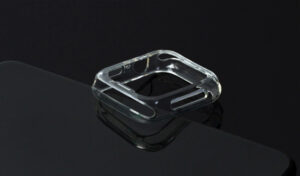Preparation before grinding and polishing
1、Polishing and polishing personnel must be trained and qualified by the examination to obtain an induction certificate before they are allowed to work.
2、Define the workpiece process requirements, material and initial state, the process parts, shape, size and polishing accuracy requirements.
3, before polishing, must check whether the polished surface has collapsed edge, collapsed angle, over-cut, deformation and grit and other defects and whether the polishing margin left is sufficient.
4.Reasonable selection of tools, fixtures, main and auxiliary materials applicable to this process according to process specifications.
5、Appropriate protection for the workpiece according to the process requirements.
6、Re-confirm steps 1-5 and proceed to the operation procedure.
Second, the workpiece clamping and protection
1, for 20Kg or less of higher or longer workpiece requirements in the polishing table using vise clamping.
2, for larger, heavier workpiece shall be used on the polishing table before and after the magnet, screw clamping code for fastening.
3、When using the working cart to polish the workpiece, wedges or related measures shall be used to ensure that the work is stable and safe.
4、For small and easy to touch the surface of the type of workpiece, touch the flowers shall be used to protect the type of surface rubber plate.
5、Workpieces with sharp corners and angles shall be protected with adhesive tape and adhesive paper to prevent injury or damage to personnel and workpieces.
6、The workpiece that needs to keep the edges and sealing glue bit can be used in the side of the temporary non-polishing block (saw blade or iron piece) or block fixed protection against edges chamfering, chamfering round.
III. Content and scope of self-inspection
1、Whether the sealant surface is collapsed and rounded.
2、Whether to destroy the original out of the mold slope ;
3、Check the size of each polished surface to see if it exceeds the reserved amount;
4、Whether the bottom rounded corners of the cavity are recessed into the side and bottom surfaces.
5、The presence of inverted slopes.
6、Whether its roughness has met the requirements of the drawings.
7、After passing the self-inspection, send it to the team leader (or inspector) for inspection.
Four, polishing operation precautions
1、Before grinding, check whether the grinding margin is sufficient and the amount of grinding and polishing should not exceed the reserved amount.
(a) The amount of grinding and polishing of the ground surface after grinding must not exceed the reserved amount by 0.05 to 0.06 mm.
The grinding and polishing of unground surfaces, electro-etching or wire-cut surfaces should not exceed the reserved amount by 0.08 to 0.1 mm;
The amount of single-sided and deep grinding and polishing of the tendon position should not exceed the reserved amount by 0.03 to 0.08 mm.
2, the operation with polishing machine requires a high degree of concentration to prevent the emergence of grooves, more than the margin, do not allow a long time in the same part of the process.
3、After each sanding, it must be cleaned with a whiskey cloth before proceeding to the next step of sanding.
4, after each polishing, must be wiped with cotton or soft paper, and then proceed to the next polishing step.
5, before the mold polishing, first determine the processing procedures: according to the different original surface conditions and roughness, select the beginning of the sequence and the required sequence of suitable processes and suitable tools (specific diamond file, # sandpaper, oil stone)
According to the geometry of the mold cavity, the roughness of the base and the characteristics of the process requirements, determine the scope of use of power tools and grinding tool heads, and strive to achieve targeted processing
6、Pay attention to the polishing of the sealing surface, especially the touching through of the special identification mark and the part of the sealing surface should not cause rounded corners and collapsed corners now.
7, grinding and polishing area requires a clean environment, in the polishing process, pay attention to the protection of the polished surface.
8、If certain parts are to be polished together after assembly, they are not allowed to be polished separately.
9, polishing finished, polishing surface self-inspection, after sending inspection to spray on the anti-rust oil, and do a good job of protection to prevent bruising, scratching.
10、All kinds of oil stones, sandpaper, diamond grinding paste and diamond files must be placed in special tool boxes with corresponding labels according to their types and specifications.
Ultrasonic polishing machine
The uses are as follows.
Clamping of sintered diamond files for the removal of electromachined layers in the bottom and side planes of the cavity.
Clamping of electroplated diamond files to remove electromachined layers and rough cuts from narrow planes, cavity sidewalls, dead and sharp corners, etc..
Clamping of various types of oil stones for dressing of form tolerances and improvement of roughness due to rough machining.
Clamping copper, soft and hard wood and adding various grit polishing paste to achieve a fine polish on the machined surface.




